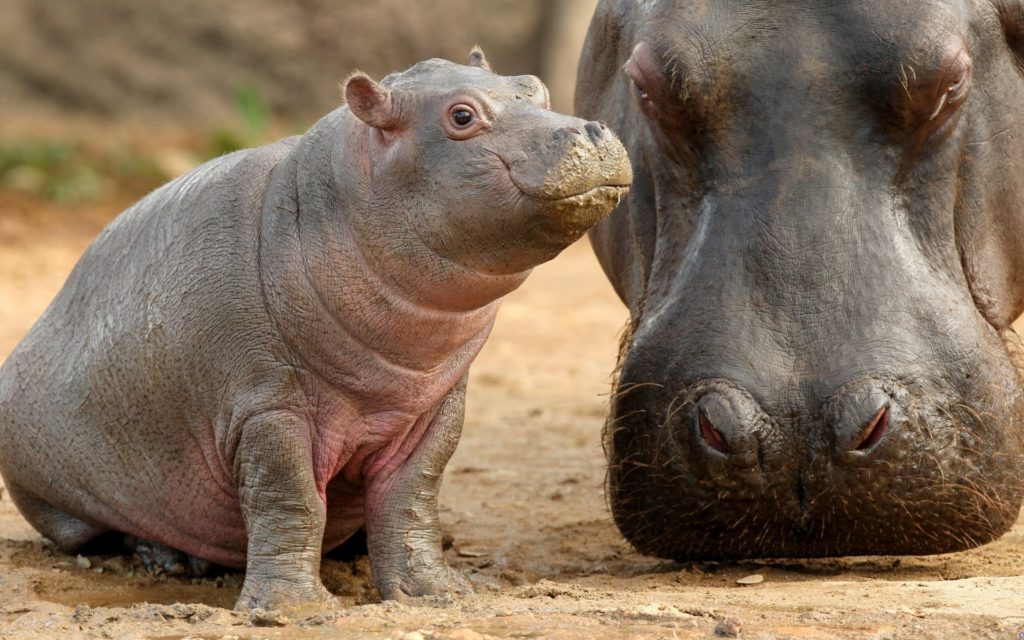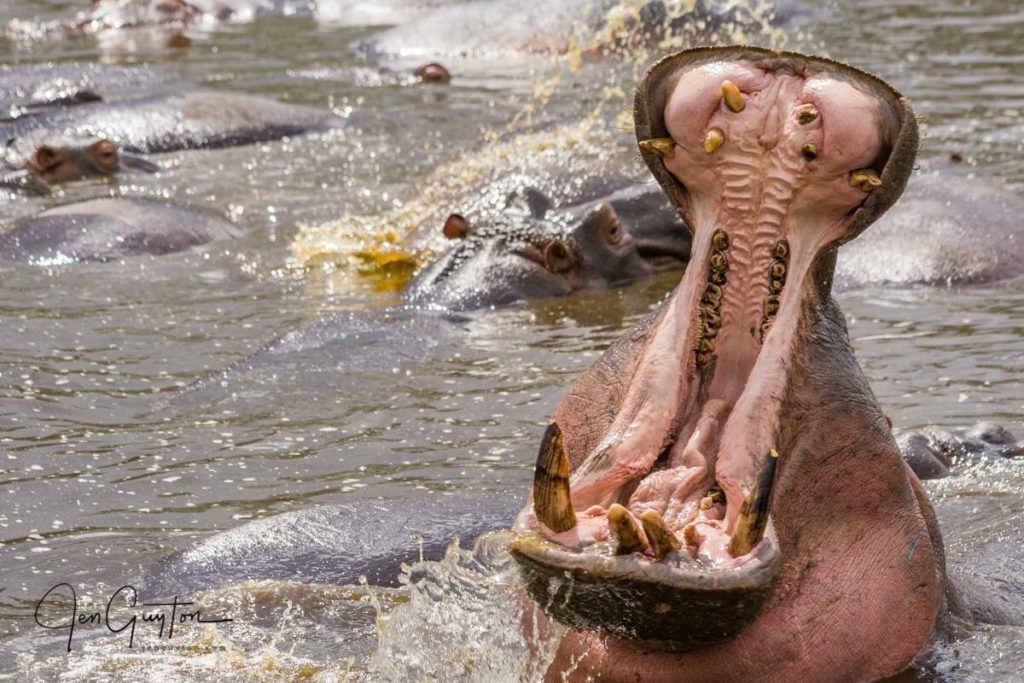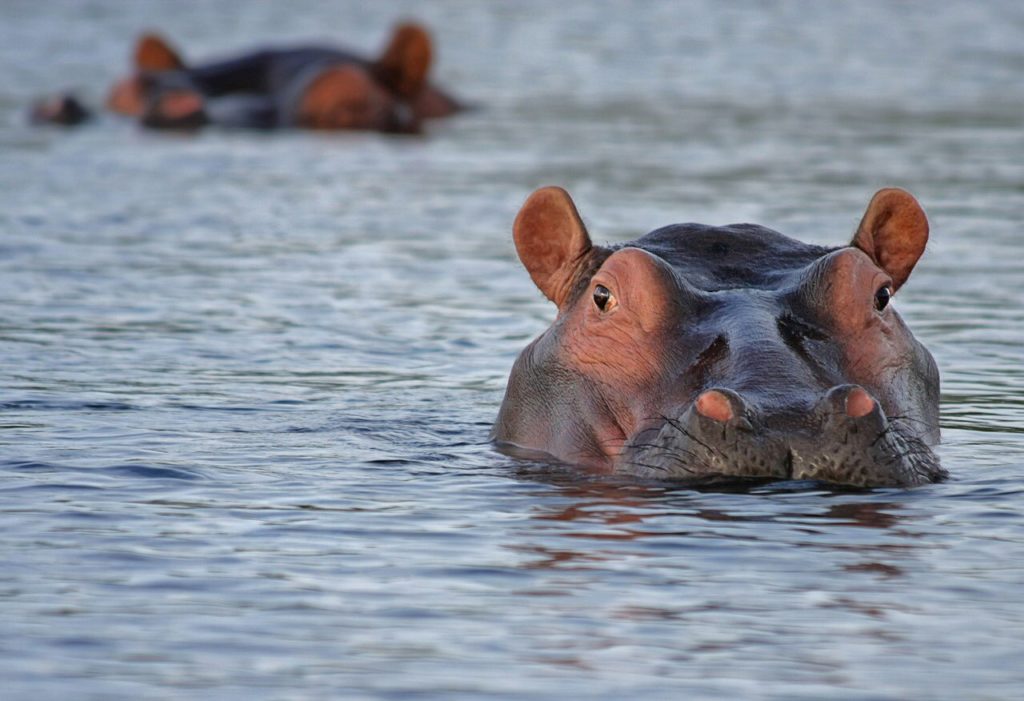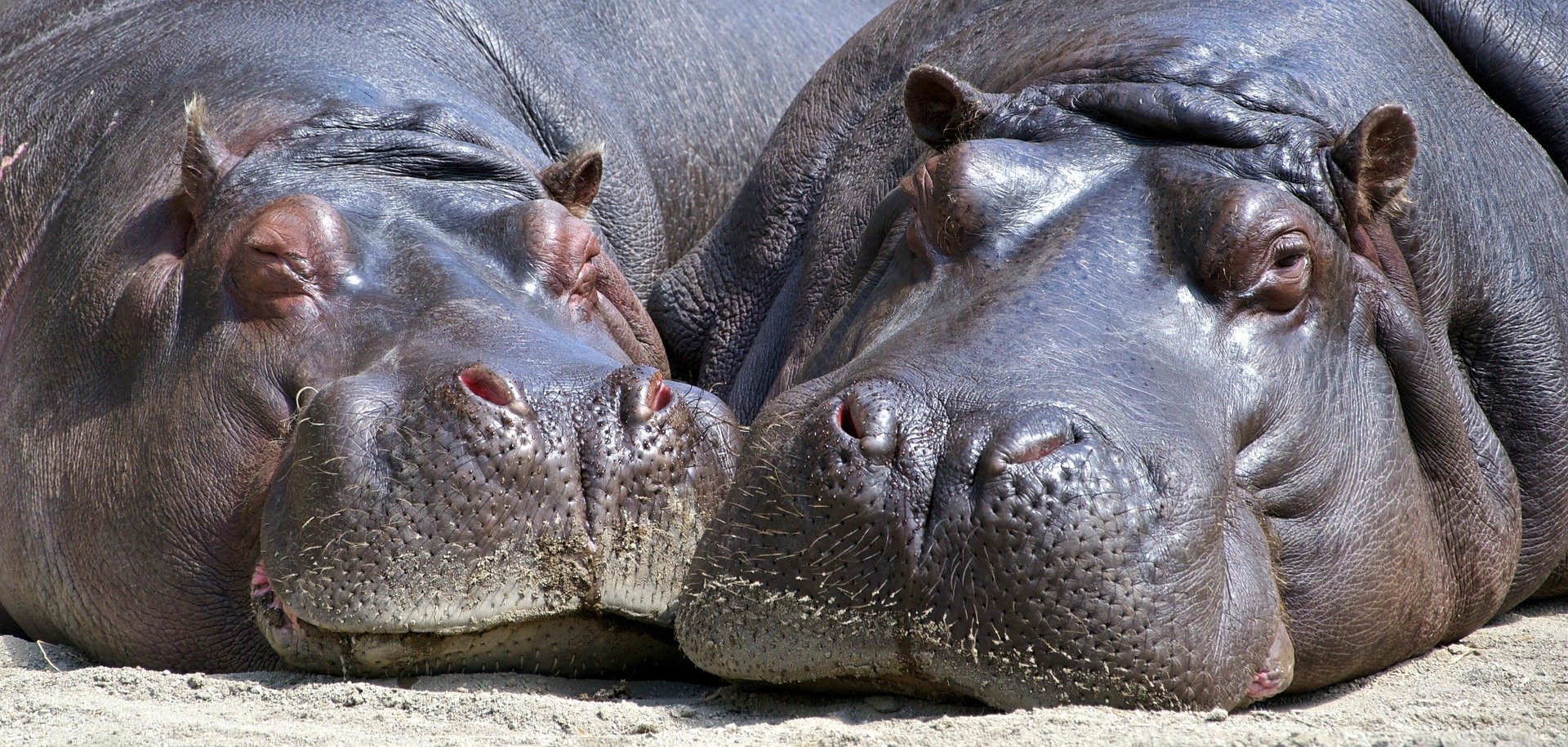
February 15th every year, is the Hippopotamus International Day that the people around the world come together for the purpose of awareness about this amazing creature.
Hippopotamus is a large, mostly herbivorous, semi-aquatic mammal and undulate native to sub-Saharan Africa.
Hippopotamus is the third largest land mammal and heaviest after the elephants and rhinos.
The hippos closest relatives are cetaceans or sea mammals (Whales, dolphins, porpoises, etc)
Hippos inhabit rivers, lakes and mangrove swamps, hippos are territorial, males presides over a stretch of river and groups of five to thirty females, few young non-breeding males and other young hippos.
As they are territorial with dominant males protecting their group, they just warned off their rival males by opening their huge mouths and display their long, curved canines. They also make loud grunts and splashes in the water aggressively.

Female hippos are called cows, they give birth every two years to a single calf. Soon after birth, the mother and her calf join other cows and calves for protection against predators, such as crocodiles, lions and hyenas.

They remains cool in the water or mud during the day, reproduction and birth occurs in the water. They emerge at dusk to graze on grasses, grazing usually is solitary individual activity, where they eat up to 35kg of forage, hippos are not territorial on land.
They can breathe while submerged in the water because their eyes, nose and ears are located on the top of their head.

Another surprising facts about hippos is that they sweat an oily red liquid which helps to protect their skin from drying out and acts as a sunblock too.
Together with buffaloes, crocodiles, black mambas and other dangerous animals in the world, hippos are among them due to their highly aggressive behavior and unpredictable nature.
Hippos are the third largest and heaviest mammals, this means they are enormous! This can’t prevent them from swimming, they’re good swimmers! They can hold up their breath for up to five minutes underwater. When they are completely submerged in the water, their ears and nostrils fold shut to keep out water.

In the wild hippos live for around 40 years. In captivity, they live longer and may reach up to 50 year old.
Poachers haven’t spared hippos too due to their ivory canine teeth and bush meat, habitat lost is another threat to hippos existence, so they are threatened.
Hippos became extinct in Europe and North Africa about 30,000 years ago. However, archaeologists evidence date less than 3,000 years ago prove hippos were present in the Levant.
Growing population of Hippopotamuses in Colombia
Pablo Escobar, Colombia’s drug lord who was killed in 1993, left a legacy that is experienced in an unexpected way today.
Hippopotamuses that were smuggled from Africa to Escobar’s private zoo at his ranch, Hacienda Napoles, have bred successfully. This has led to serious environmental concern which has big impact on human safety, according to study by researchers at Mexican and Colombian universities.
The hippos have spread out from their original home, around 100 miles east of the city of Medellin, dispersing around the Magdalena river basin as their population continues to grow steadily. Some still remain at Escobar’s Hacienda Napoles, which is now a theme park.
The authors of the study, published in the January 2021 edition of the journal Biological Conservation and reported by CNN, recommend that the hippos be culled to prevent long-term negative effects, but other scientists are calling for a castration program to control the hippo population, citing concerns over animal welfare and the attachment of some locals to their new neighbors.
Back in the 1980s, Escobar imported one male and three female hippos to join his menagerie. Upon his death, other species of exotic animals were relocated, but the hippos were left because they were difficult to capture and transport, according to the study.
The hippos soon began to spread in the surrounding area, but government efforts to cull them were halted after a public outcry.
A sterilisation compaigns was begun, instead, but it has done little to slow down populations growth of hippos.
From 2011 to 2019, four males were castrated and two females sterilized, but doesn’t seem to have intended impacts on their reproduction, according to the study.
Researchers says there are probably more than 80 hippos in the area today, up from 35 in 2012, and they are worried that the population will continue to thrive through out Colombia if no action is taken.

The study also reported by CNN, cites research showing the negative effects of hippo waste on oxygen levels in bodies of water, which can affect fish and ultimately humans, and raises concerns about the possible transmission of diseases from hippos to humans.
Hippos also pose a threat to the livelihoods and security of people in affected areas, the study said, eating or damaging crops and engaging in aggressive interactions with humans.
The researchers cite incidences of hippos chasing people, as well as a hippo attack in May 2020 in which a 45-year-old man was seriously injured.
Escobar brought the hippos to his ranch in the early 1980s.
But while the study’s authors recommend a cull, Enrique Zerda Ordóñez, a biologist at Colombia’s National University, believes castration programs are the way forward.
Culling the hippos would be an “easy option,” said Zerda, but it could affect the survival of a species that is under threat in Africa.
Though sterilizing hippos is no easy task, he said, he believes it is both possible and necessary to do so now, before their numbers rise further, according to a press release from the university.
“Right now, the authorities don’t consider the species to be a problem,” Zerda said, “but in the future, when there are 400-500 hippos, it could represent a threat to the survival of other species that feed in the same areas.”
Threats to the existence of hippos in Africa
Political instability and poor institutions in a number of the African states, like Democratic Republic of Congo where the population dramatically dropped to 900 from around 29,000 in Virunga National Park in the mid 1970s. This decline was caused by the Congo Second War disruptions. Mai-Mai rebels, poorly paid Congolese soldiers and local militia groups were the main poachers. Today, Virunga hippo population appears to have increased, probably due to greater enforcement and cooperation between fishermen and park authorities. The sales of hippos’ meat is illegal, but to track black market meats from hippos is difficult.
Hippos meat is considered a delicacy in some areas of central Africa and the teeth have become a valued substitute for elephant ivory.
Much more effort is needed to conserve this creature from becoming extinct in near future.












